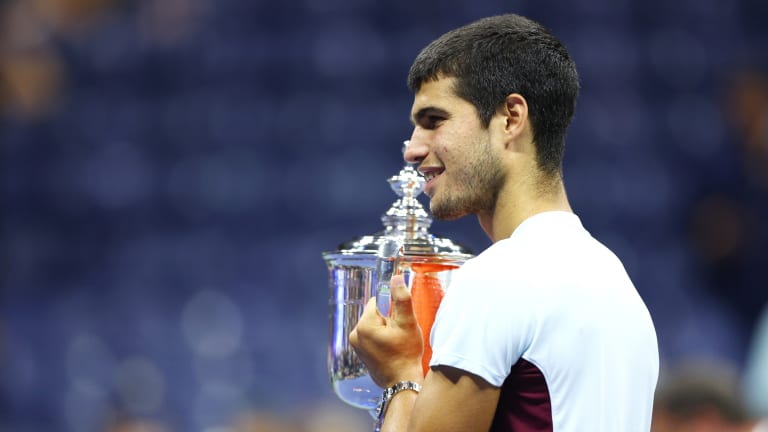Facts & Stats
10 incredible things Carlos Alcaraz achieved by winning the US Open
By Sep 17, 2022Facts & Stats
Novak's 99 Titles—a Djokovic deep dive: What they are, where they were won, when he did
By Mar 30, 2025Facts & Stats
Alexandra Eala's breakthrough run to the Miami Open semifinals: 10 of the best stats and records
By Mar 29, 2025Facts & Stats
10 things to know about Diego Schwartzman's career as he retires from tennis in Buenos Aires
By Feb 11, 2025Facts & Stats
20 sin-sational things Jannik Sinner achieved by winning the Australian Open this year
By Jan 30, 2025Facts & Stats
20 magnificent things Madison Keys achieved by winning the Australian Open
By Jan 28, 2025Facts & Stats
Madison Keys: First woman in 20 years to beat Top 2 en route to Australian Open title
By Jan 25, 2025Facts & Stats
Ageless Gael Monfils ousts Taylor Fritz in Melbourne for first career Top 4 major win
By Jan 18, 2025Facts & Stats
Aryna Sabalenka, Iga Swiatek and Coco Gauff to battle for No. 1 ranking at Australian Open
By Jan 10, 2025Facts & Stats
Carlos Alcaraz could become the youngest man ever to complete a Career Slam in a few weeks
By Dec 30, 2024Facts & Stats
10 incredible things Carlos Alcaraz achieved by winning the US Open
A day after becoming the first man born in the 2000s to win a Grand Slam title, he became the first teenager to reach No. 1 in ATP rankings history.
Published Sep 17, 2022
Advertising

Alcaraz's win over Ruud in the US Open final was his tour-leading ninth Top 10 win of the year. He's now 9-4 against the elite in 2022.
© 2022 Getty Images